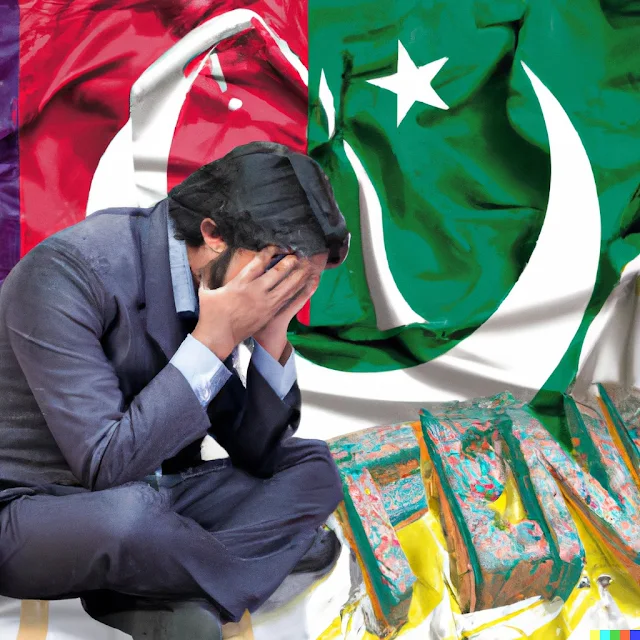Pakistan has been facing an economic crisis for the past several years, and the situation has only been exacerbated by the COVID-19 pandemic. The country's economy was already struggling with high levels of inflation, rising debt levels, and a dwindling foreign exchange reserve. The pandemic has only made matters worse, as it has disrupted global supply chains and led to a slowdown in international trade, which has had a negative impact on Pakistan's exports.
One of the main causes of the economic crisis in Pakistan is the country's high levels of debt. According to the International Monetary Fund (IMF), Pakistan's public debt was over 86% of its gross domestic product (GDP) in 2020, which is significantly higher than the recommended level of 60%. This high level of debt has led to a burden on the country's budget and has made it difficult for the government to invest in essential public services such as education and healthcare.
Inflation has also been a major problem for Pakistan's economy. The country's inflation rate reached a peak of 14.6% in 2020, which is significantly higher than the average rate of inflation in developing countries. This high rate of inflation has made it difficult for ordinary citizens to afford basic goods and services and has led to an increase in poverty and social unrest.
Pakistan's foreign exchange reserves have also been dwindling in recent years. The country's reserves were at a record low of $10.3 billion in 2020, which is significantly lower than the recommended level of at least three months of import coverage. This shortage of foreign exchange has made it difficult for the country to pay for its imports and has led to a balance of payments crisis.
The COVID-19 pandemic has only made matters worse for Pakistan's economy. The country has been hit hard by the pandemic, with more than 825,000 confirmed cases and over 17,500 deaths as of September 2021. The lockdown measures put in place to curb the spread of the virus have disrupted the country's economic activity and led to a slowdown in international trade. This has had a negative impact on Pakistan's exports, which account for about 25% of its GDP.
The government has taken several measures to try and address the economic crisis. In 2020, it entered into a $6 billion bailout package with the IMF, which included a series of structural reforms designed to address the country's economic imbalances. These reforms included measures to reduce the budget deficit, improve tax collection, and increase the efficiency of state-owned enterprises.
However, these reforms have not yet had a significant impact on the country's economic situation. The government has struggled to implement the reforms due to resistance from various stakeholders and has had to rely on borrowing to meet its financial obligations. This has further increased the country's debt levels and has made it difficult for the government to invest in essential public services.
In addition to the measures taken by the government, there are several other factors that have contributed to the economic crisis in Pakistan. One of these factors is the country's political instability. The country has a history of military coups and has had several changes in government in recent years. This political instability has made it difficult for the government to implement long-term economic policies and has contributed to the country's economic woes.
Another factor is the country's energy crisis. Pakistan has been struggling with a shortage of electricity for the past several years, which has led to frequent power cuts and has disrupted economic activity. The government has made efforts to address the energy crisis, including investing in renewable energy sources, but these efforts have not yet had a significant impact.
